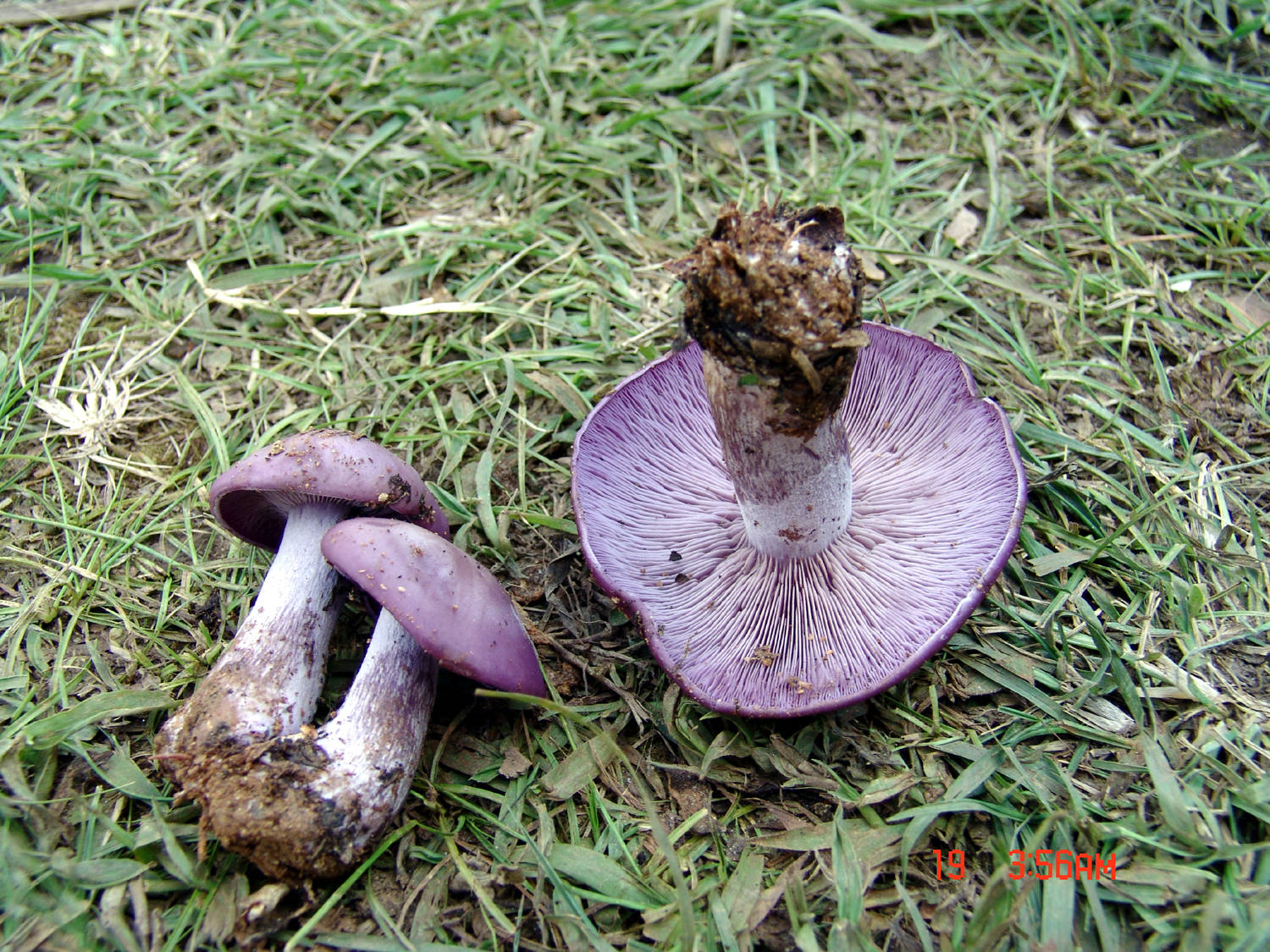
Local name: No local name known
Edibility: Edible if well cooked, but it is wise to try a very small portion at first because they have been known to disagree with some people.
Habitat: Often growing in fairy rings and terrestrial.
Description: Cap: 6-15 cm in diameter and retains a slightly enrolled margin until the violet tinge on the cap fades and the surface turns buff brown centres. Old specimens sometimes develop wavy margins. Hymenophore: Close gills, adnate to adnexed, purple or pale purple to bluish-purple or greyish- purple when young, fading to buff, pinkish-buff or brownish in age. Stem: 5-10 cm tall and 1-2 cm in diameter, more or less equal and solid. Flesh: Thick, soft and purplish to lilac-buff. Spore Print: Pale pinkish-buff.
Comments: A similar species Lepista saeva, is less common and lacks the violet tinge to the cap. Care is needed to ensure that these edible mushrooms are not confused with some of the larger purple species of Cortinarius. All Cortinarius fungi have rusty brown spores, so it is fairly easy to distinguish them from Lepista nuda.


